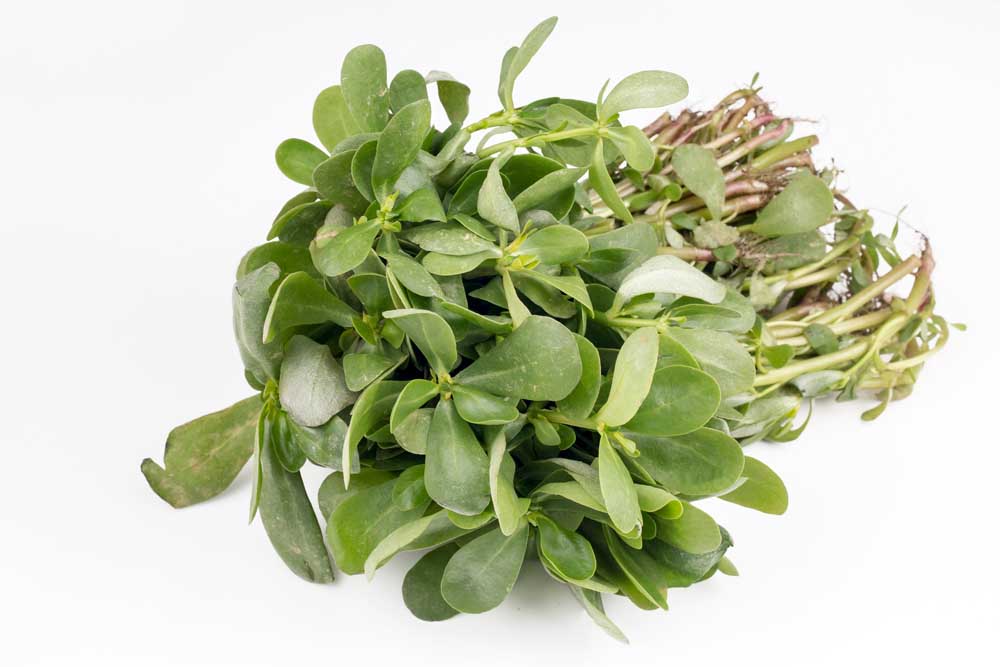Gardening column: Weeds and mulch in a hot climate
Published 12:30 am Wednesday, August 4, 2021

- Purslane is the low-growing fleshy weed that produces a yellow flower.
It was really easy to put on the “I don’t see any weeds” blinder when the temperatures were soaring. Then the temperatures cooled and I realized the garden is a mess with weeds. That was my realization when I took time to observe rather than just flip the switch on the pump to start the irrigation.
Now comes heat or not, I have to rid the Minnesota Midget melon patch of purslane if I want to enjoy the delicious melons.
Purslane is the low-growing fleshy weed that produces a yellow flower. It is a highly nutritious weed containing more omega-3 fatty acid than any other leafy vegetable plant. The golden purslane cultivar “Goldberg” is sold by the pound in farmers markets.
I did accept a dare several years ago when a Master Gardener crew was weeding at the OSU Demo garden in Redmond. I did the taste test and was surprised at how tasty it was. I thought it had a nutty flavor. Purslane is used as an addition to salads and can also be sautéed. I felt safe in doing the taste test as chemical sprays and soil additives are not used in the OSU Demo gardens.
Weeds, in addition to being unsightly, compete for water, light and soil nutrients. Hand pulling is easy in raised garden boxes, for larger gardens use a hoop hoe or the old-fashion 4-pronged hoe.
Gardeners usually think of adding mulch to our gardens as a late fall garden chore to protect the plants from excessive winter damage. Due to the drought conditions this year mulching should be a top priority for the purpose of conserving water.
To clarify applications: for winter protection, the mulch is spread after the ground has frozen. If used in the early spring with seedlings, the ground should be warm before applying. At this time of year it is used for plant survival. The usual amount to apply is between 2-4 inches.
If you save your grass clippings you are ahead of the game providing you do not use a weed and feed product. The cuttings should be at least a week or 10 days old. Grass clippings are rich in nitrogen and were a favorite long before the bagged products appeared in the marketplace. Don’t accept the good offer from neighbors for clippings unless you can be assured they do not contain any herbicides or pesticides.
There are many good commercial mulches available including products locally produced at the Deschutes Landfill and several of our landscaping supply companies.
Mulching has the benefit of creating plant material with a stronger root system. Perhaps you irrigate for a very limited time every day or every other day. The message sent to the landscape is that deep root growth isn’t necessary, “another drink will be along shortly.”
Focus your water use on what is your priority. Mine is my tomato plants. I have 64 that I am watching, protecting. Some are grown for my passion for canning. The majority are experimental. Ripe tomatoes are shared.
The focus goes back to the 1978 challenge of “You can’t grow anything in Central Oregon.” I thrive on experimenting and rejecting new tempting varieties that surface every year — proving that with the right choices we can enjoy bountiful harvests.
I finished mulching the tomato plants in the greenhouse and the raised beds in the yard last week and every day I use a very unscientific method of probing the soil with a piece of bamboo stake. I go into the soil to the depth of the root zone. If the probe shows moist black dirt particles I know I can stretch the irrigation another day.
The results so far is that in the greenhouse, and open garden, I have gone from the daily sprinkle, sprinkle to a deep watering every 4 days.
New plantings of trees, shrubs, perennials and annuals may be struggling right now. What to do?
Be realistic. Focus on your trees and shrubs. Annuals and perennials, even lawns, can be replaced. Your trees and shrubs are investments that need to be protected. Consider the effects of a tree planted to eventually provide shade or a long standing tree that is a family favorite and think about care for their survival. For best water conservation and weed control around a young tree, apply a circle of mulch 4 feet in diameter. This will cover the developing root system and also prevent mower damage to the trunk.
A closing thought — mulching is one of the best ways to boost soil biology.





